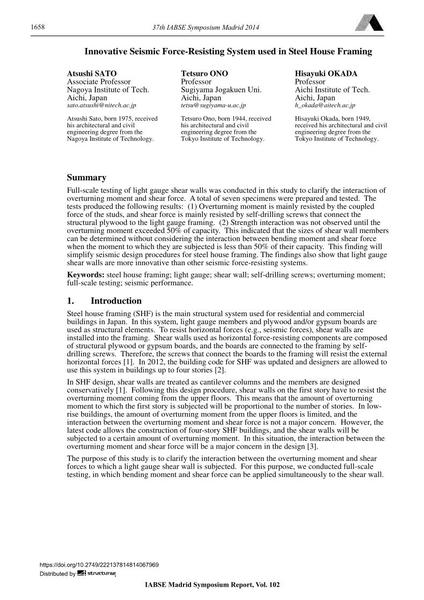Innovative Seismic Force-Resisting System used in Steel House Framing

|
|
|||||||||||
Bibliografische Angaben
| Autor(en): |
Atsushi Sato
Tetsuro Ono Hisayuki Okada |
||||
|---|---|---|---|---|---|
| Medium: | Tagungsbeitrag | ||||
| Sprache(n): | Englisch | ||||
| Tagung: | IABSE Symposium: Engineering for Progress, Nature and People, Madrid, Spain, 3-5 September 2014 | ||||
| Veröffentlicht in: | IABSE Symposium Madrid 2014 | ||||
|
|||||
| Seite(n): | 1658-1662 | ||||
| Anzahl der Seiten (im PDF): | 5 | ||||
| Jahr: | 2014 | ||||
| DOI: | 10.2749/222137814814067969 | ||||
| Abstrakt: |
Full-scale testing of light gauge shear walls was conducted in this study to clarify the interaction of overturning moment and shear force. A total of seven specimens were prepared and tested. The tests produced the following results: (1) Overturning moment is mainly resisted by the coupled force of the studs, and shear force is mainly resisted by self-drilling screws that connect the structural plywood to the light gauge framing. (2) Strength interaction was not observed until the overturning moment exceeded 50% of capacity. This indicated that the sizes of shear wall members can be determined without considering the interaction between bending moment and shear force when the moment to which they are subjected is less than 50% of their capacity. This finding will simplify seismic design procedures for steel house framing. The findings also show that light gauge shear walls are more innovative than other seismic force-resisting systems. |
||||
